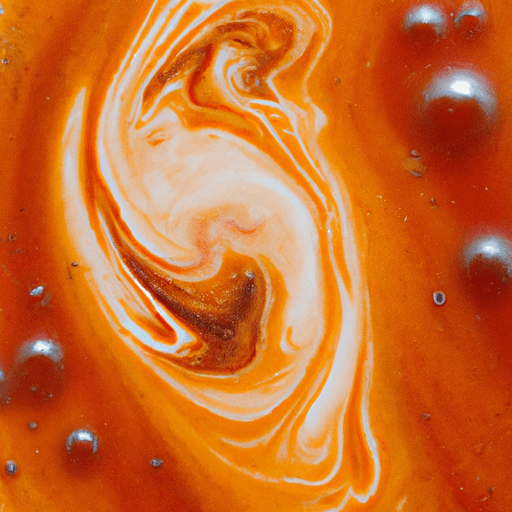Clam Juice: Unleashing the Ocean’s Umami Elixir
If you’ve ever embarked on a culinary journey, chances are you’ve encountered clam juice. A versatile ingredient known for its unique umami flavor, clam juice has long been a secret weapon of chefs and home cooks alike. In this article, we will dive into the intricacies of clam juice, discussing its taste, common uses in cooking, nutritional value, and uncovering some interesting history and facts about this briny elixir.
A Palate Teeming with the Sea
With its origins rooted in the rich waters of coastal regions, clam juice offers a distinctive taste that can best be described as briny, savory, and subtly sweet. The juice captures the essence of the sea, infusing dishes with an unmistakable depth and complexity. Its umami nuances provide a natural salinity, making it a versatile ingredient to enhance the flavors in a wide array of recipes.
Bringing Flavor to Culinary Masterpieces
Clam juice is like a culinary artist’s paintbrush, adding depth and texture to a myriad of dishes. Its defining flavor pairs exceptionally well with seafood, enhancing the natural sweetness and brininess of crustaceans and fish. It serves as a foundational component in seafood stews, chowders, and bisques, providing a velvety base that elevates the overall taste.
But clam juice doesn’t stop at seafood-centric recipes. Its versatility extends to other culinary creations, such as risottos, pasta dishes, and even cocktails. Imagine the unmistakable umami essence in a linguine alle vongole or a zesty clamato cocktail. The possibilities are endless when it comes to infusing clam juice into your cooking.
Nutritional Value Beneath the Surface
Beyond its exceptional flavor, clam juice also boasts an impressive nutritional profile. It is low in calories, fat, and carbohydrates, making it a healthy addition to your culinary endeavors. Additionally, clam juice is a rich source of essential minerals like potassium, iron, and calcium. These nutrients contribute to overall well-being and support vital functions within the body.
The Legends of Clam Juice
Clam juice has a storied history rooted in ancient culinary traditions. It is believed that Native American tribes along the Eastern seaboard were the first to extract the elixir from clams, using it for both nourishment and preservation. Centuries later, European settlers embraced clam juice, integrating it into their recipes to infuse dishes with a unique coastal essence.
Today, clam juice is celebrated globally, appreciated for its versatility and ability to enrich diverse cuisines. Whether you find yourself in a bustling seafood market or a quaint coastal restaurant, you can experience the captivating allure of clam juice across various culinary cultures.
Fun Facts Worth Shucking
Did you know that clam juice is often used as a substitute for fish stock in recipes? It imparts a similar flavor profile while offering a more affordable alternative.
The production of clam juice involves steaming clams, then filtering the resultant liquid to create a clear, flavorful elixir.
Clams are known as filter feeders, which means they absorb nutrients and minerals from the water, infusing the juice with additional trace elements beneficial to our health.
In ancient Chinese cooking, clam juice was often combined with wine to create a flavorful marinade for meat and poultry.
Let’s Get Cooking with Clam Juice
Now that you’re well-versed in the wonders of clam juice, it’s time to unleash your culinary creativity. From hearty seafood soups to tantalizing pasta dishes, the possibilities are as vast as the ocean itself. Use clam juice as your secret ingredient, and watch as your dishes become elevated to new heights of flavor.
So, head to your nearest seafood market or gourmet store, grab a bottle of clam juice, and embark on a culinary adventure that will transport your taste buds straight to the mesmerizing shores of the sea.
Clam Juice
Origin: Clam juice is a liquid extracted from clams, which are bivalve mollusks found in oceans and freshwater environments around the world. The practice of extracting clam juice for culinary use dates back many centuries.
Common Uses: Clam juice is often used as a base for seafood soups, stews, chowders, and sauces. It can also be used to add flavor to seafood risottos, marinades, dressings, and cocktails like the classic Bloody Mary. Clam juice provides a rich, briny taste that enhances the overall umami flavor of dishes.
Nutritional Benefits: Clam juice is relatively low in calories but is packed with nutrients. It is a good source of protein, vitamins, and minerals such as iron, calcium, potassium, selenium, and vitamin B12. Additionally, it also contains omega-3 fatty acids, known for their potential health benefits.
Unique Properties: Clam juice has a distinct briny flavor due to the natural combination of minerals and amino acids found in clams. It has a clear, pale yellow color and a slightly thick consistency. The flavor and aroma of clam juice are often described as marine, salty, and mildly sweet.
Historical Significance: Clam juice has been used in various cuisines throughout history. Native American tribes, such as the Narragansett and Wampanoag, used clam juice as a base for traditional dishes. In the 18th and 19th centuries, clam juice gained popularity in American and European cuisine for its unique umami flavor and ability to enhance seafood-based dishes. Today, it continues to be a staple ingredient in many seafood recipes.




Use the share button below if you liked it.
It makes me smile, when I see it.